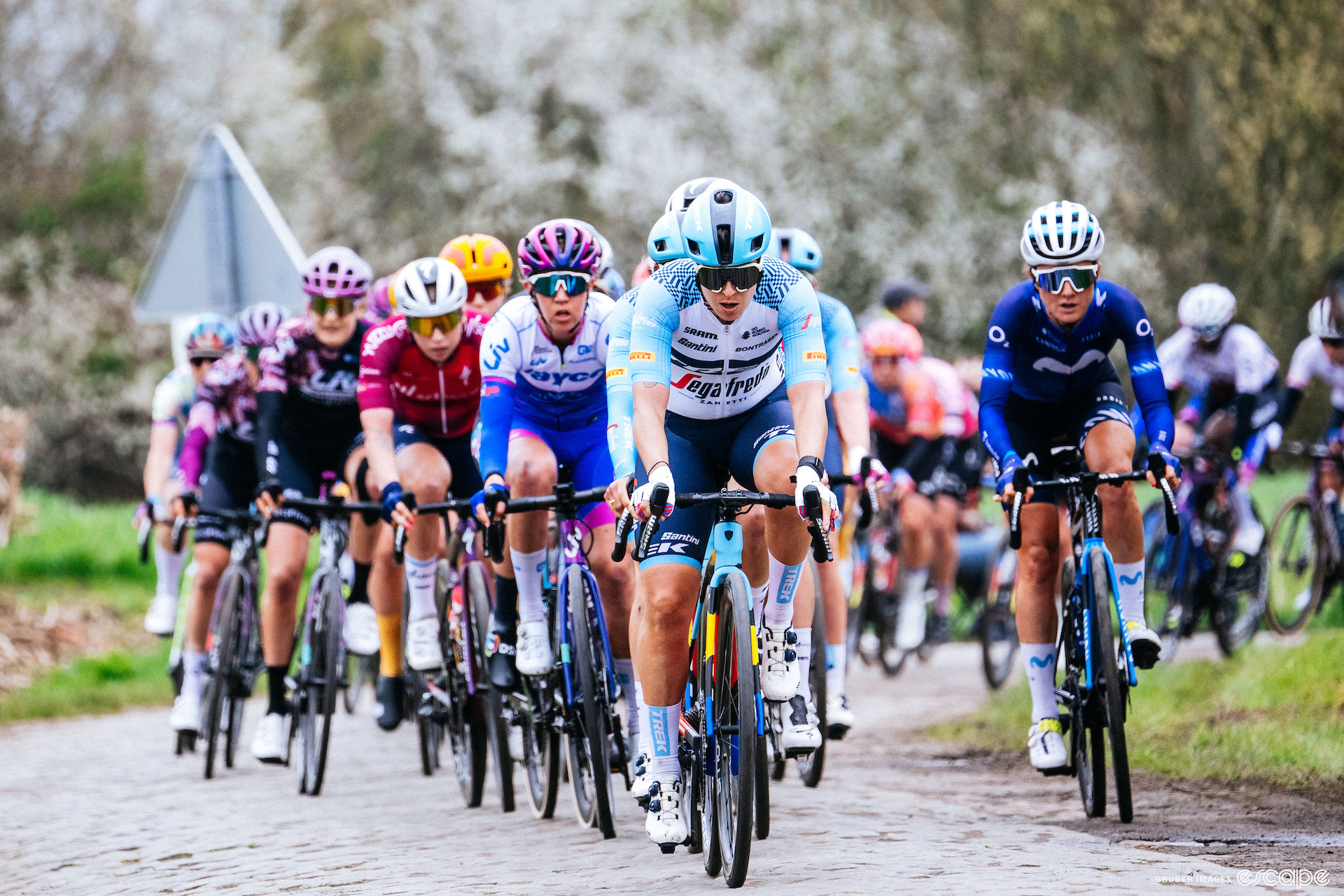The men’s WorldTour situation is not good, according to my colleague Andy McGrath, and while I am inclined to agree with most of his takes, I would argue the women’s situation is much better off. There are some glaring issues that, if left unattended, will lead the women’s peloton down the same road as the men’s and need addressing. But, as it stands now, it would be easier for the governing body of cycling to get ahead of the WWT than fix the men’s. If we were to fix it, what would that look like?
First off and most obviously the Women’s WorldTour is newer. There are far fewer races – and race days, since the longest women’s stage race is 10 days – so the issue of calendar overlap is rare. But this is where my opinions diverge from Andy’s. For me, I don’t mind if a top rider or two misses a race. This year, for example, the form of Annemiek van Vleuten was relatively unknown prior to La Vuelta Femenina, while her chief rival Demi Vollering was clearly flying. The question of whether or not Van Vleuten would rise to the occasion was an interesting unknown ahead of the first “Grand Tour” (more on that later) of the season.
Perhaps it’s because I was a pro at one point, albeit not as high up in the rankings as those I’m writing about, but my view is that asking top riders to all attend the WWT races not only takes away opportunities from up-and-coming riders and women otherwise working for their leaders but also stretches the top riders thin, making the racing less explosive. Reijanne Markus, for example, turned from super domestique to leader in 2021 when her then Jumbo-Visma teammate Marianne Vos sat out a few races. Now the Dutch national champion is targeting the general classifications in Spain, an opportunity she never would have gotten had she always been relegated to working for others.
I am less interested in cutting races from the Women’s WorldTour calendar and more interested in reorganizing it to make travel easier on teams, reduce the environmental impact (a stretch), and make it possible for non-European teams to do blocks of racing during certain times of the year.
The number one problem in my eyes, and one the UCI has paid little attention to, is the growing gap between the top teams in the sport and everyone else.
The big changes
- The women’s peloton needs a three-tier system for teams like the men, so there is a middle ground between Continental Teams and WorldTeams. At the moment there are a handful of WorldTeams that have no business being in the top tier of the sport, and while the relegation system the UCI has in place for 2024 will weed out a few of those teams, it doesn’t address the issue of developing the future of the sport.
- Annual relegation to cut the WWT down to only 10 teams.*
- A more organized calendar with three Grand Tours of equal length and a more exciting finale to the season as a whole.
- Some sort of incentive for races to be non-WT in order to further develop the peloton.
* I am not going to touch the points system, but Andy does a great job of explaining why that needs some attention. When I tried to dig into adjusting that it was too chaotic, so I would like to focus more on the calendar and a three-tier system.
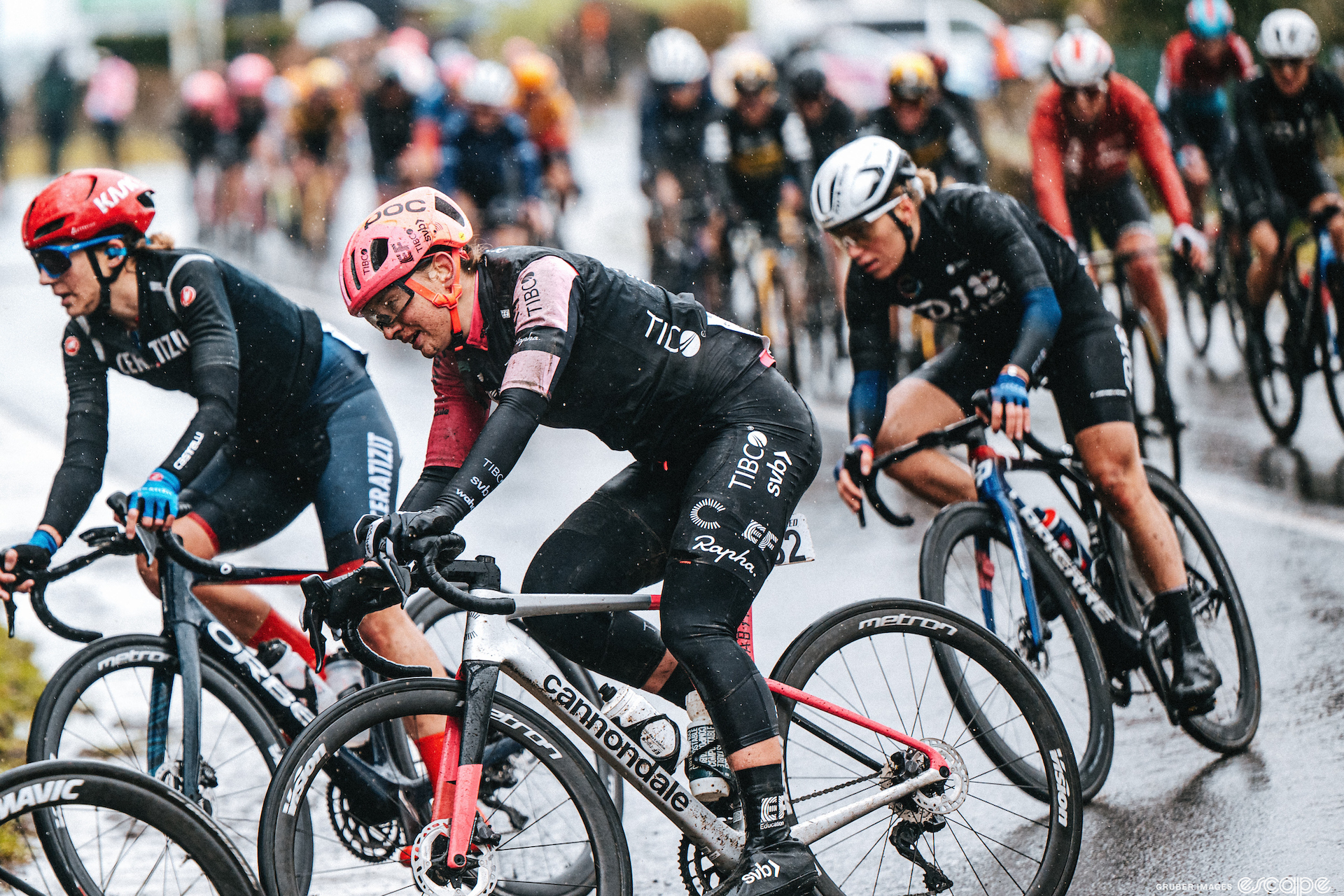
A lack of depth and development
The biggest issue in women’s cycling right now is not equal prize money or even live coverage. What is currently standing in the way of growth in the sport is the widening gap between the top 10% of the peloton and everyone else. To be fair this has always been an issue; it’s why we see the same riders winning over and over again, but we’ve also seen with the recent implementation of a minimum salary that – with the right resources – women can develop at rapid speeds.
Currently, only WorldTeams are required to pay riders, yet the peloton for WWT races is made up of both WWT and Continental teams. Only WWT teams are guaranteed invites to the WWT races so in 2021, on the eve of the inaugural Tour de France Femmes avec Zwift, five teams joined the WorldTour so they could compete in the biggest race in women’s cycling.
Great! More teams paying riders livable wages, you say. Well, yes, but there is not enough depth in the peloton just yet for those teams to all be active in the racing. That means you have WorldTeams that can barely compete, with most of the team DNFing races. For a team that is – on paper at least – in the top tier of the sport, this is a pretty bad look. You want all the top teams to be active, with riders animating the race, rather than just making up the numbers in the peloton.
It’s a chicken-egg situation, I guess. In order to have the depth the sport needs to pay more attention to development. That means development teams, teams that are happy to focus on building WorldTour riders rather than joining the top ranks, and races that allow those riders opportunities to learn and grow.
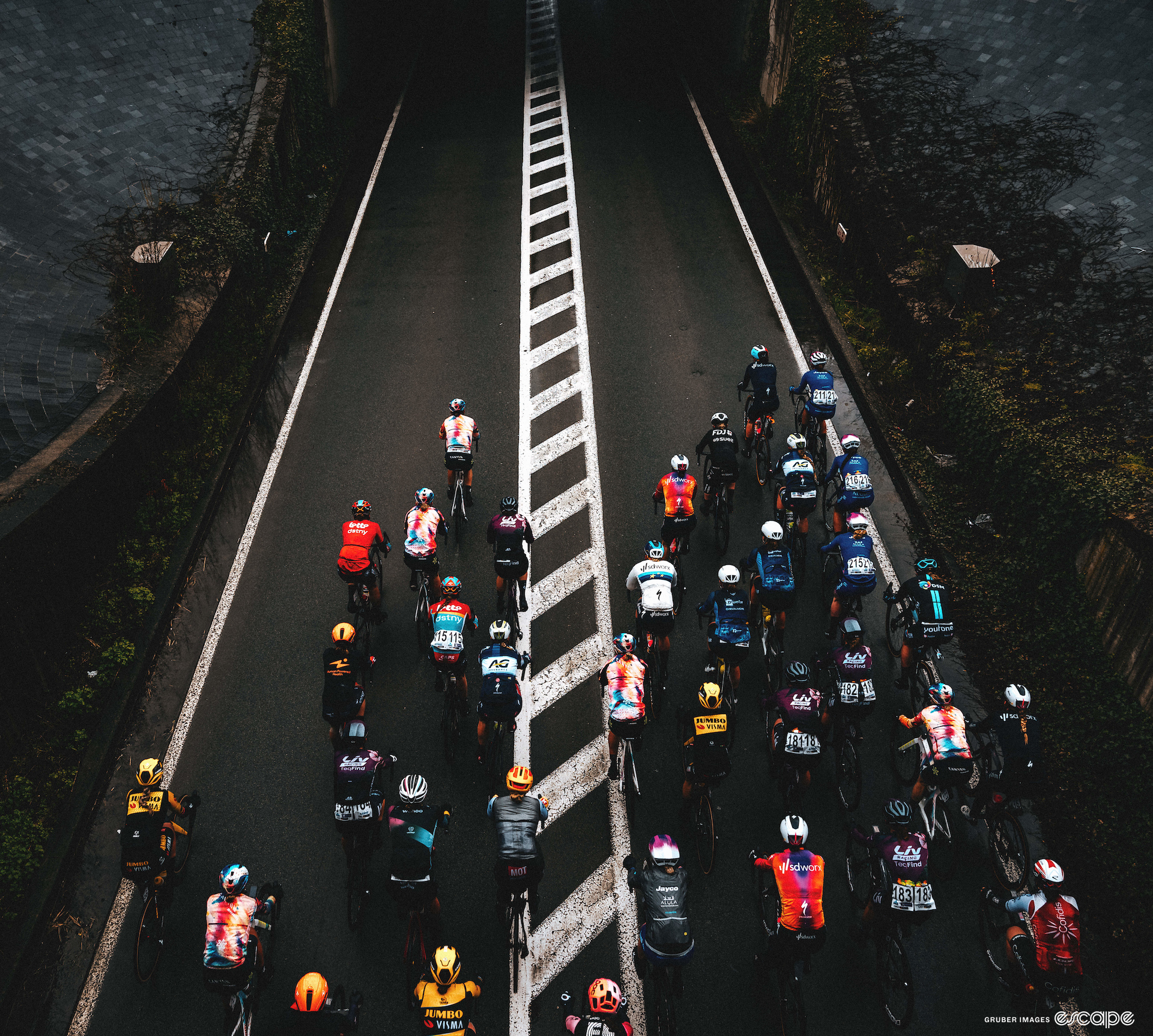
A three-tier system, like on the men’s side, that requires riders in the middle (ProTeam) tier to be paid wages and requires a certain level of professionalism would help create a system to feed riders into the WorldTour when they are ready, rather than throw them in over their head. These ProTeams will be able to apply for entry to WWT races, and if we reduce the number of WorldTeams to 10 there are more slots available for ProTeams to compete at races like Paris-Roubaix Femmes avec Zwift and the Tour de France Femmes.
At some point down the line when women’s cycling has more numbers the number of WorldTeams can be revisited, but in its current form the peloton simply doesn’t have the depth to support a 15-team top tier.
This would also mean, like in the men’s, Continental teams are not eligible to compete in WWT races, but that’s how it should be. The WorldTour races are the best races in the world. In order to ensure the races are competitive they should field the best peloton possible. You wouldn’t want an amateur racing the Tour de France; why are lower-level teams allowed to fill space in the top women’s races?
By filling the WT rosters with WorldTeams and ProTeams there is a reason for teams to be second-tier, so teams like Human Powered Health, Israel-Premier Tech and LifePlus-Wahoo have a reason to develop riders. They will be part of the biggest races, but they don’t need to be in the top tier of the sport to do so.
Don’t call it a Grand Tour unless it’s worthy of the name
For years we’ve called the Giro Donne a Grand Tour. At 10 days (sometimes nine) it’s the longest race on the women’s calendar, and it’s the closest we’re going to get at this point, but La Vuelta Femenina and the Tour de France Femmes getting the title of “Grand Tour” just because they have some affiliation to the men’s three-week races leaves a bad taste.
All three races need to be 10 days. Full stop.
If we want to say the women have three Grand Tours, then at least make them all equal on race days. That seems pretty straightforward to me.
A story within a story
In order to properly build tension and suspense leading into the Grand Tours the women need to have a similar structure to the men in that there are smaller stage races proceeding a 10-day event. So instead of having La Vuelta Femenina before Itzulia Women and Vuelta a Burgos, make the two shorter races before the 10-day race.
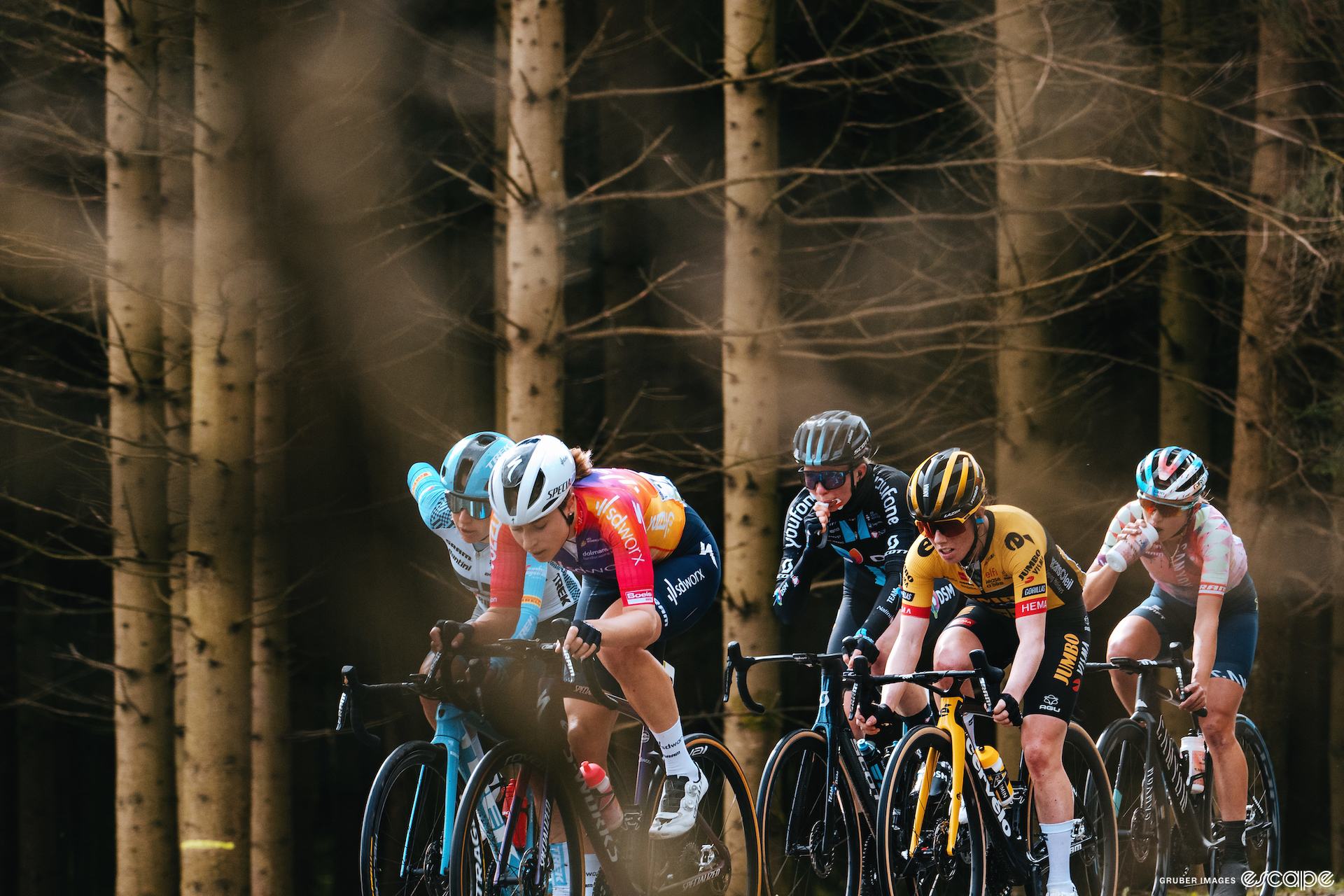
The same would then happen with the build-up to the Giro Donne and the Tour de France Femmes. As for the one-day races, I like the Spring Classics and wouldn’t want to change a thing (other than the order), however, one of the highlights of 2020 was having the season end with Liège-Bastogne-Liège. Lizzie Deignan winning solo with yellow, red and orange leaves peppering the ground is a sight I will never forget. So, I’d like to move Ardennes Week to the end of the season just before Worlds …
Let’s finish it off with a bang
Currently, there are a couple of WorldTour races in China and the Tour de Romandie just after the Worlds. Because most riders peak with an eye on the rainbow jersey the races that follow it are unlikely to attract top riders or a very competitive atmosphere. At that point, riders are cooked and ready for a break. So the season should end with Worlds. Have that be the final bang, the culmination of a years worth of drama and tearful moments.
Worlds is one of the biggest one-day events on the calendar, and anything that follows it will automatically be an afterthought. Instead, move those races around so they fit better within the whole picture of the season.
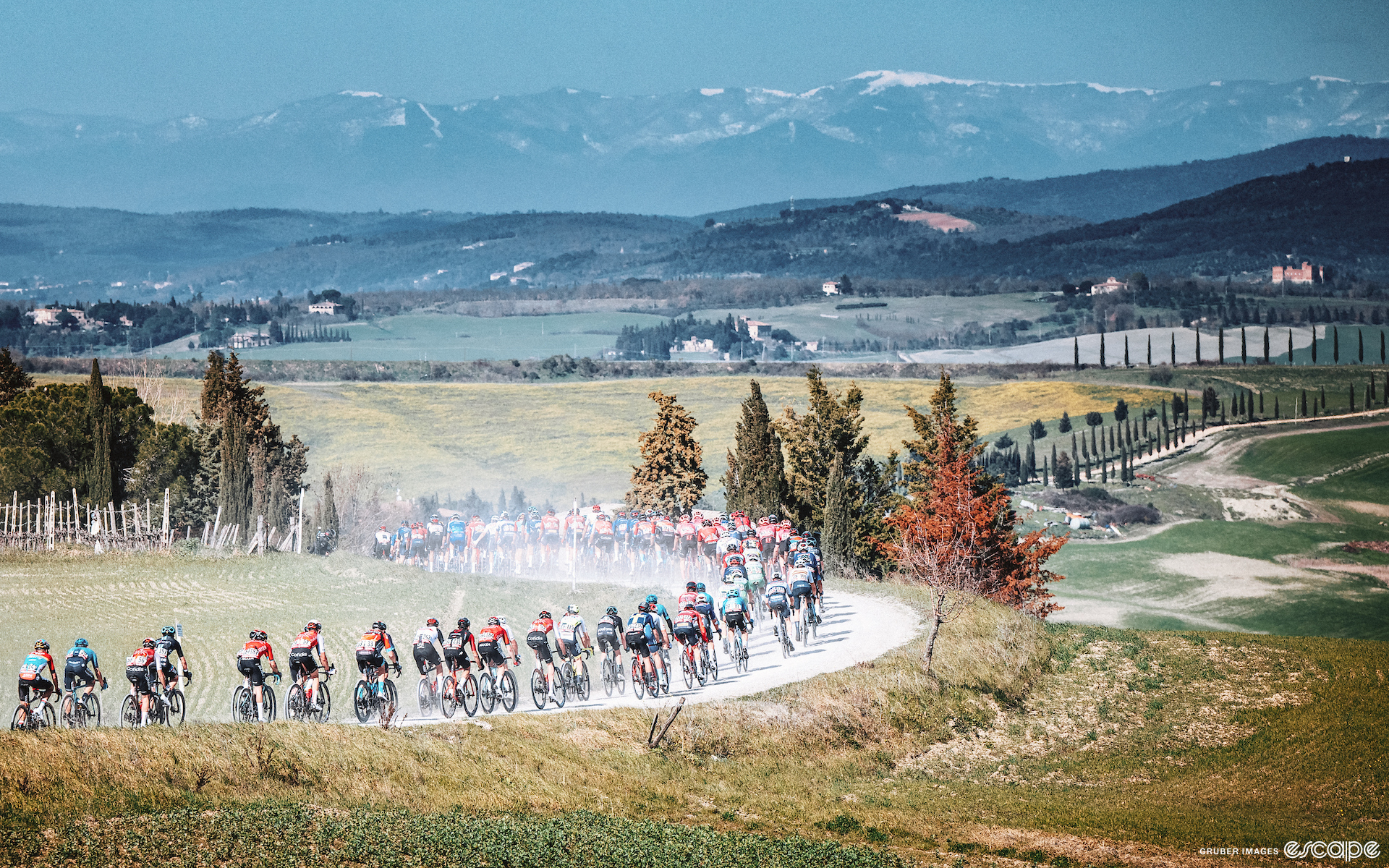
Avoid the post-Tour de France Femmes slump
From the very first race, almost every question throughout the season revolves around the Tour de France Femmes. Who will target it? What will each team look like? Riders plan their entire season around the Tour. The result is that once it’s over the rest of the season feels like a post-Tour hangover.
This is a change that wouldn’t be easy because I do like that the Tour de France Femmes is directly after the men’s race. It means the hype of the men’s event carries over and people who follow the men for three weeks can keep the party going for the women, but if the massive event was moved to later in the season the build-up would last longer, the anticipation would be almost overwhelming, and the races that come after, like the Tour of Scandinavia, wouldn’t suffer the post-Tour slump.
You can’t all be WWT
Hand in hand with the issue of team structure to promote development is a lack of non-WT races. There are barely enough 2.Pro and 1.Pro stage races and even fewer 2.1 and 2.2 stage races or 1.1 and 1.2 races. (Actually, while I’m here can we come up with a new way to name each category of race because this is hard to understand even for those well-versed in the sport).
Races like the 2.Pro LOTTO Thüringen Ladies Tour are essential to non-WT teams, but even the long-running race in Germany has its eye on going WorldTour in 2024. While the race might deserve that honour, it would take away one of the most important races for non-WorldTeams to race a challenging European race alongside some but not all of the WorldTeams.

Races like Thüringen need some sort of incentive to remain separate from the WorldTour calendar, a calendar that has swelled a ridiculous amount in the last year with teams barely able to field enough riders to cover the races, but I digress.
It should go without saying that in order to continue to grow the sport, the sport needs a base. Without these lower-level races, there is no base, there is nowhere for riders to learn the craft and hone their skills. There needs to be races of each level all over the world to encourage growth not only in Europe, a subject worth its own discussion another time.
WorldTour races need WorldTour pelotons
My final point, although I could probably keep ranting for days, is that WorldTeams should be required to race WorldTour races. When the WorldTour first started teams weren’t required to attend all the WWT races, like the men. But that was before we had 15 WorldTeams with, in theory, WWT-level budgets.
What happened recently with the overlap of RideLondon Classique and the LOTTO Thüringen Ladies Tour is not a good look for women’s cycling. The top team in the sport lining up for a lower-level race and basically obliterating all the small teams while only nine of the 15 WorldTeams show up for the WWT race happening the same weekend isn’t exactly ideal.
Multiple WorldTeams sent split squads to each of the races, and that’s fine, but if a race is supposed to be in the top-ranked races in the world teams should want to line up for it. Perhaps it’s a points problem, but too often we see WorldTeams skipping WorldTour races. One WorldTeam I won’t name, for example, has skipped most of the WorldTour races this year with an eye on the Tour de France Femmes. I find this, for lack of a better word, lame.

Abby’s proposed women’s WorldTour calendar (don’t @ me)
Key: # SR = Stage Race and the number of stages. 1 = One Day
January (AUS)
- Tour Down Under (5, SR)
- Cadel Evan’s Great Ocean Road Race (1)
February
- UAE Tour (5, SR)
- Chonging Island (4, SR)
- Guangxi (1)
March (European season kicks off in Italy before heading to the Netherlands)
- Strade (1)
- Milan Sanremo (1)
- Trofeo Alfredo Binda (1)
- Ronde van Drenthe (1)
April (Belgium)
- Omloop Het Nieuwsblad (1)
- Brugge-De Panne (1)
- Gent-Wevelgem (1)
- Tour of Flanders (1)
May (Netherlands/France and the start of stage race season in the USA)
- Paris-Roubaix Femmes (1)
- Redlands Classic (5, SR) ** (I would actually keep Redlands as a 2.Pro however I am putting it here because if it were right before the Tour of California it would encourage teams to race both, which would mean more reason to come to the USA for a block of racing and would hopefully start to revive road racing in America)
- Tour of California (5, SR) (yes I have resurrected the Tour of California in this fictional calendar, you’re welcome)
June (Now let’s head to Spain!)
- Itzulia (4, SR)
- Burgos (4, SR)
- La Vuelta Femenina (10, SR)
July (the heaviest part of the season)
- RideLondon (3, SR)
- Women’s Tour (7, SR)
- Tour of Scandinavia (6, SR)
- Giro Donne (10, SR)
August (the tail end is getting near)
- GP de Plouay (1)
- Simac Ladies Tour (5, SR)
- Tour de Romandie (5, SR)
- Tour de France Femmes avec Zwift (10, SR)
September (final 1 days)
- Ardennes Classics (Flèche, Amstel, LBL, 1 each)
- Lombardia (1)
- World Championships (TT and road)
None of the proposed changes are perfect, but I think we can all agree women’s cycling is growing at a speed no one saw coming. If that growth at the top continues without any attention to the base of the sport the whole thing is going to topple over. Basic science would tell you something super top-heavy isn’t something you’d want to lean on.
Did we do a good job with this story?
